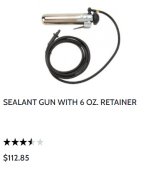...as the organization matures....the growing pains of their engineering organization...
I'm not trying to bash Van's here, but...they're 50 years into this business now (just look at their website), and make claims to more of their aircraft being completed every day than several spam-can companies combined. They should already *be* mature by now.
I see 3 main problems that are being highlighted by this issue and the LC parts issue:
1. Design issues that lead to significant rework or "fixes" (this -10 and -14 SB);
2. Significant QA problems; and
3. Bad crisis management, communications and PR.
Item 1 can be addressed via the normal engineering and design process fixes, and overall they haven't had many; this -10/-14 cracking issue is probably one of the larger ones to come out, although they should have addressed it early on (see item 3).
Item 2 is a *real* problem. There was apparently poor or no QC at the vendor site after initial approval, and similarly for received parts. THAT'S a big deal, and a "mature" company should not have let these parts be accepted, let alone shipped, and gotten to the bottom of the problem very early on.
Item 3 is of their own making, and it seems every company has to re-learn the lessons here. Taking too long to acknowledge a problem exists, then taking even longer to let customers know, and then inadequate communications once the issue becomes known, etc. This is a business problem.
The point is that *mature* companies, like ones that have been in business for half a century and are, as someone said, at the top of the market sector should NEVER have let these issues get to this point.
Hey, I want them to not only survive but thrive, but they just seem to me (from the outside) to be floundering with these issues.






